
The safety standard for safety shoes and pro sneakers or JSAA is a standard established by referring to JIS standard for
the protection of toes equivalent to safety shoes type S (safety shoes for general work) and type L (safety shoes for light duty).
- 1. JIS standard
- 2. JSAA standard
- 3. Different usage of Pro sneakers & Pro boots Type A & Type B
- 4. Safety characteristics of protective shoes
1. JIS (Japanese Industrial Standard)

JIS is a standard for safety shoes offering the protection of toes with stricter standard and higher safety level than JSAA, so safety shoes is tested by JIS.
under JIS’s standard are divided into 4 categories
- Super heavy work (U)
- Heavy work (H)
- Normal work (S)
- Light work (L)
The test would be conducted under JIS T8101 standard for the following characteristics
- Impact efficiency test
- Compression efficiency test
- Separation efficiency test
- Puncture resistant test
- Anti slip efficiency test
- Anti-static efficiency test
- Shock absorbing efficiency test
- Impact resistant test on upper
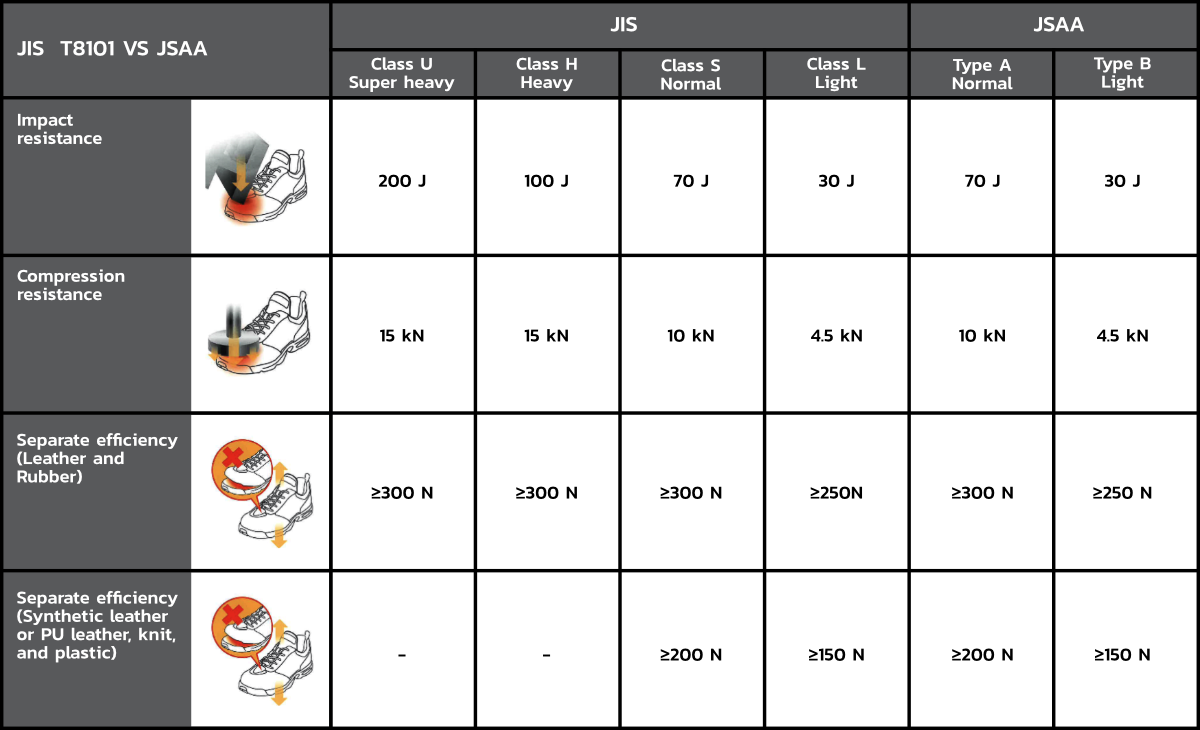
2.JSAA (Japanese Safety Appliances Association)
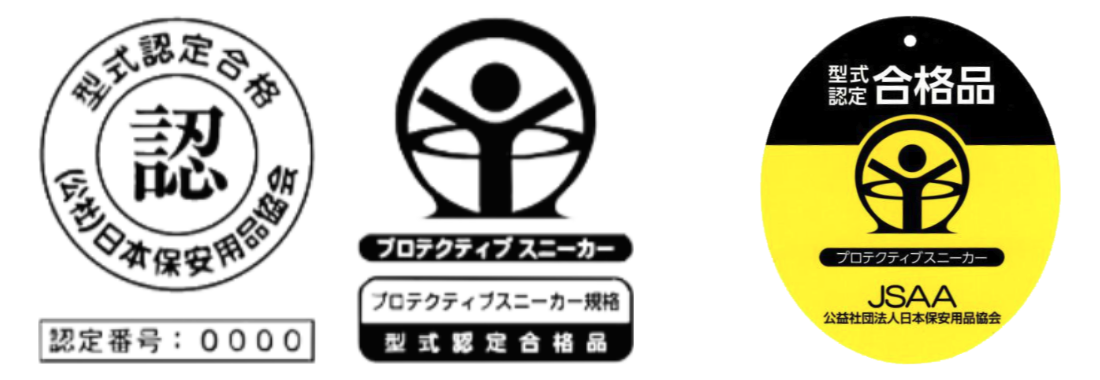
JSAA’s standard is a specific standard for safety sneakers, also known as “protective sneakers”. JSAA’s certificate would be given to 2 types of shoes; normal work (A) and light work (B) and the efficiency test is equivalent to JIS T8101 in general work (S) and light duty (L).
- Type A normal work
- Type B light work
According to JSAA’s standard, the certification system for protective sneaker (pro sneakers) would be labeled and marked with product certification tag approved by Japan Safety Appliances Association. The usage of each shoes is indicated e.g., JSAA A (for normal work) or JSAA B (for light work).
JSAA standards test consists of
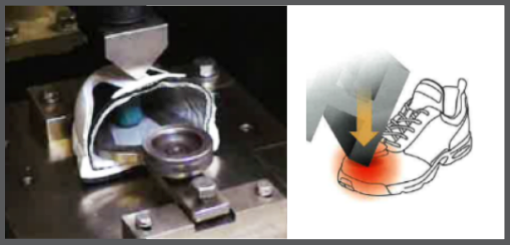
1. Impact efficiency test of toe cap
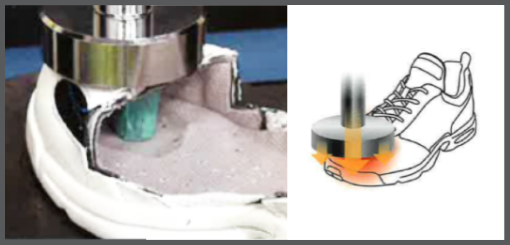
2. Compression efficiency test
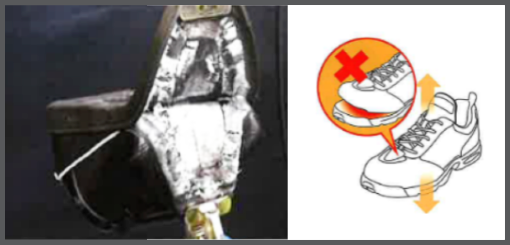
3. Separation efficiency test for sole and upper body of shoes
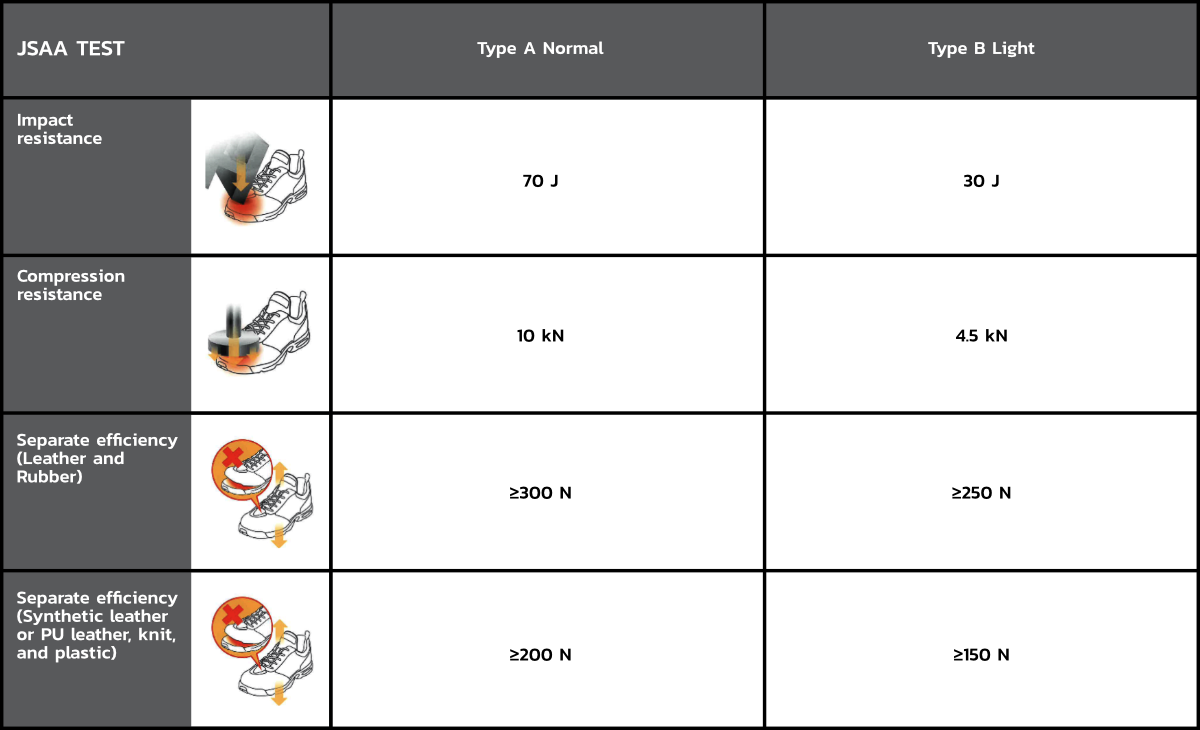
Different usage of Type A and Type B
Pro sneakers & Boots
Compared to safety boots with JIS standard, Pro sneakers and Pro boots with JSAA’s certificate are designed with unlimited options of materials for toe caps, vamps and soles. The appearance might not be very much distinct from general sneakers; lightweight, comfortable and stylish, however, our Pro sneakers and Pro boots are only slightly less durable than those safety shoes made of leather, rubber or Polymer. We suggest a choice of safety shoes once performing heavy duties, while our Pro sneakers and Pro boots are suitable for less heavy- or lighter duties.
3.1 Differences between safety shoes and protective sneakers (Pro sneakers)
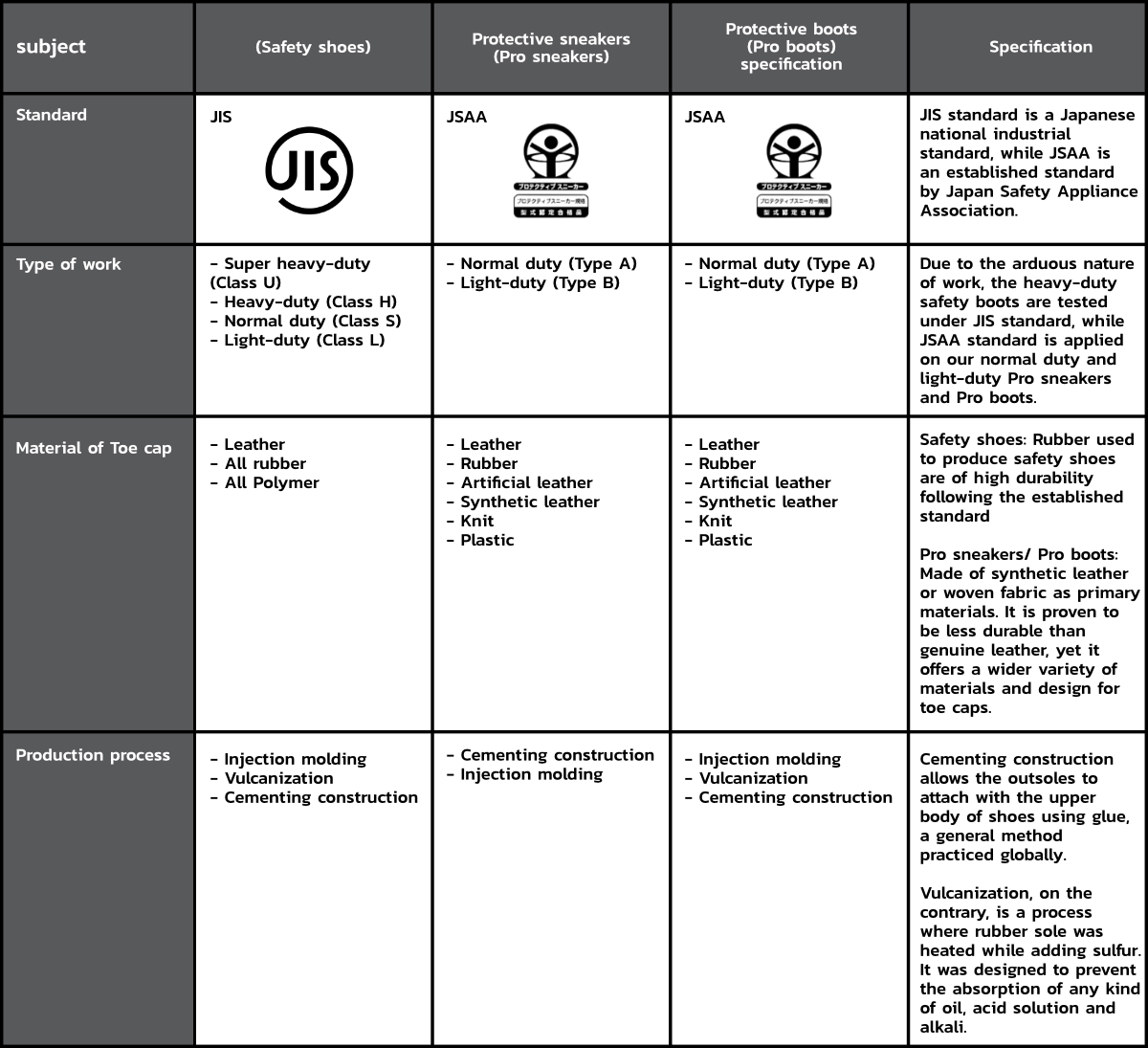
According to the compressing and impacting and separating standard for shoes, our Pro sneakers and Pro boots are determined by their types of usage following the shoe standard, thus, they are considered as Type A and Type B shoes. There are several differences in their usage depending on whether or not the specific characteristics are met as suggested below;
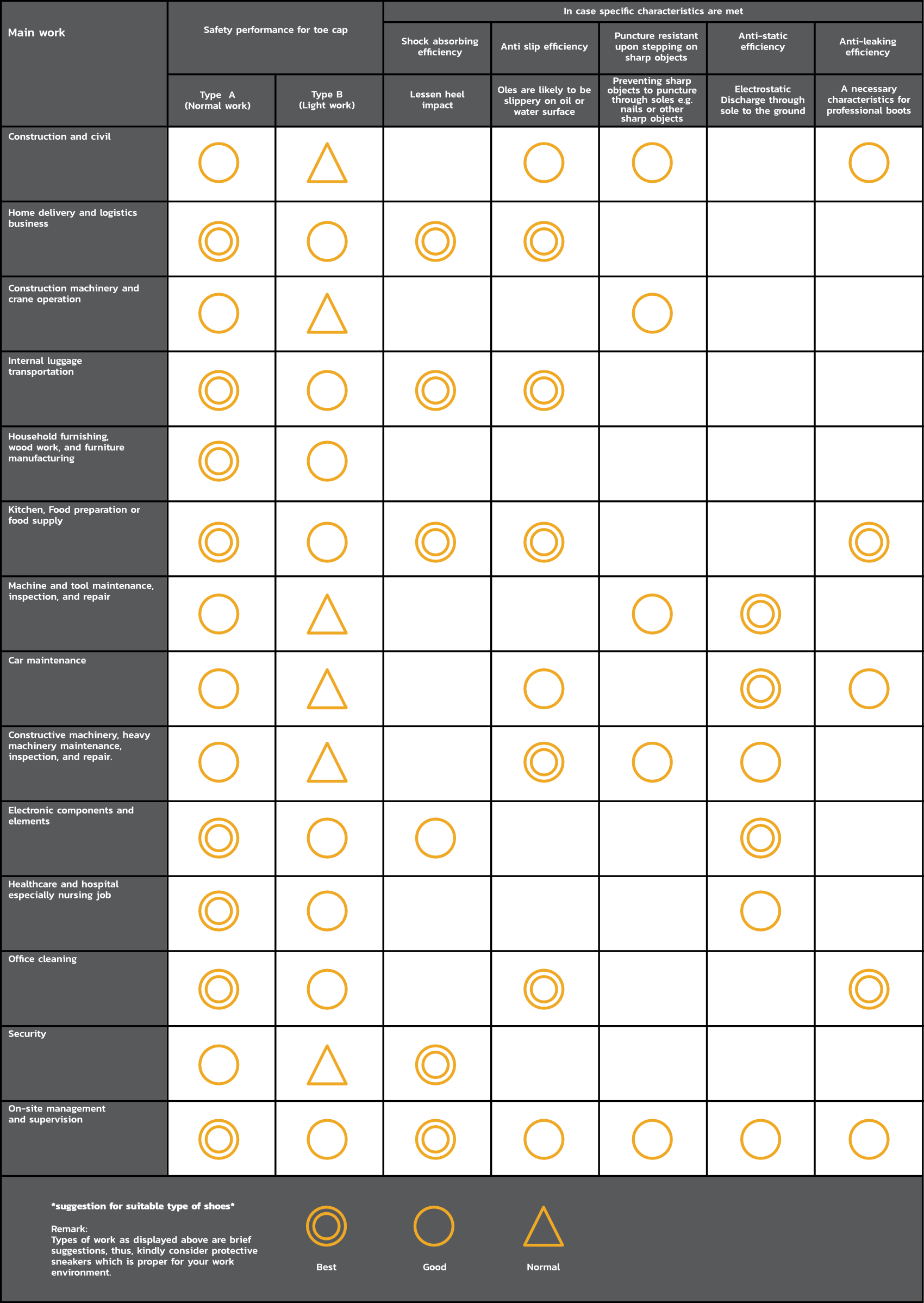
Description of performances
4. Safety characteristics of protective shoes
JSAA is a standard established by referring to JIS standard for the protection of toes equivalent to
safety shoes type S (safety shoes for general work) and type L (safety shoes for light duty).
9 characteristics to immaculately protect your feet
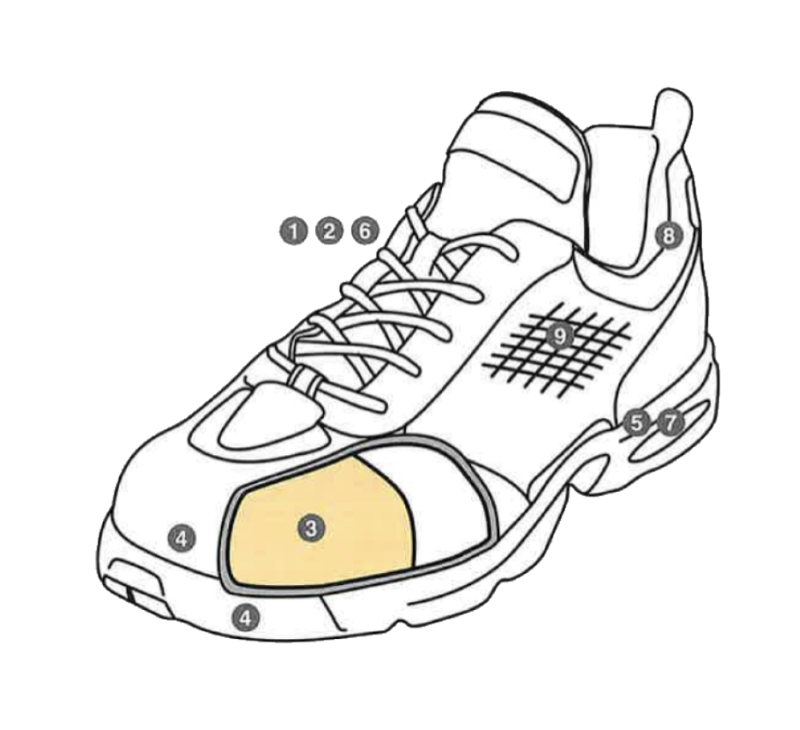
1. Designed as lightweight shoes, Pro sneakers are pain-free when you wear them for long-hours.
2. Minimal in style and comfortable to wear
3. Specifically designed toe cap to protect your toes from impacting or falling objects.
4. Vamps and soles are durable and approved by international standard
5. Offer decent crush cushion sensation
6. Easy to wear and breathable
7. Designed for heel shock absorption
8. Made from reflexive materials
9. Offer sweat-reduced structure for pleasant sensation while wearing our shoes

